IN HISTORY
2006 AQUOS mobile phone
“IN HISTORY”: Sharp and design in history – A joint project with Sharp Museum commemorating its 40th anniversary.
Hello, I am Nakatani from Sharp Museum. This is a series where Sharp Museum staffs Fujiwara and Nakatani talk randomly about products and history of Sharp. I hope this will be an opportunity for you to find interest in Sharp’s history in some way.
This time I will introduce the 2006 AQUOS mobile phone.
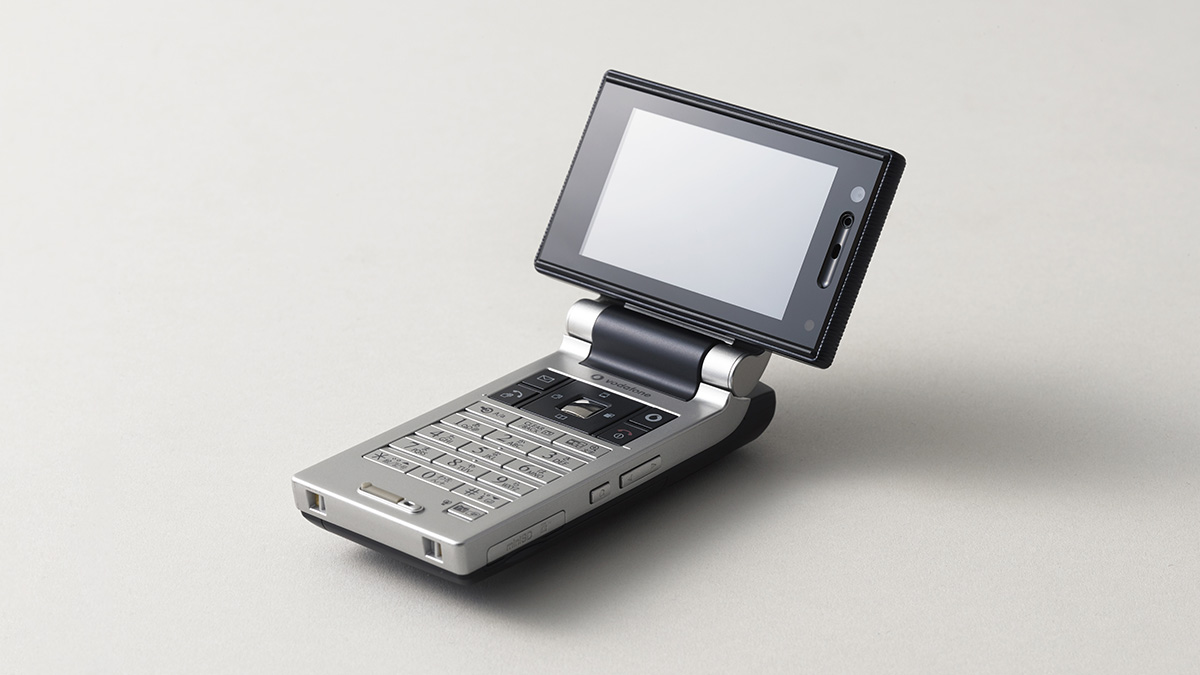
Start of One Segment Broadcasting
Sharp Museum History Hall introduces Sharp’s footsteps over the past 100 years and more.
It is most pleasant to hear the voices of visitors admiring “Yes, this is it. It brings back so many memories!” I can feel there is a connection between our customer and Sharp’s product which forms a part of our history. It always makes me happy to take a glimpse of our customers’ memories.
The cycloid style one-segment mobile phone known as AQUOS Keitai is one product on display that makes many generations of customers smile.
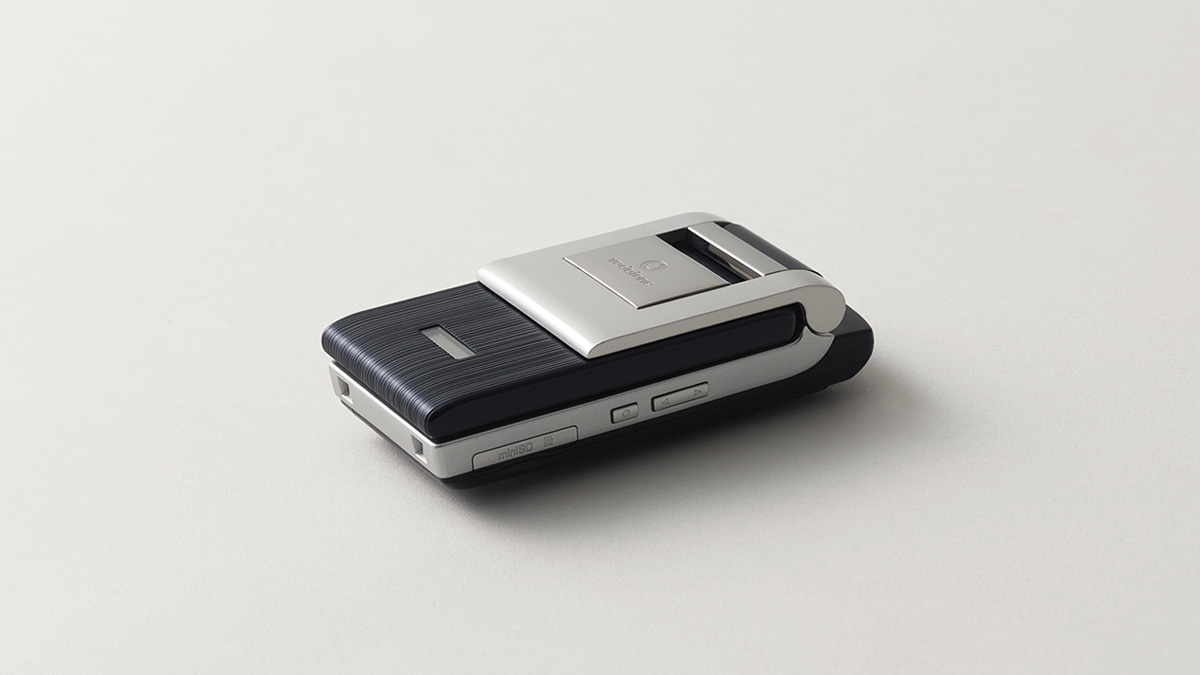
On April 2006, back when the name “smartphone” still didn’t even exist, one-segment broadcasting service started in Tokyo, Nagoya and Osaka regions which eventually spread throughout Japan. AQUOS Keitai was introduced as a mobile phone that enables to watch one-segment broadcasting, a terrestrial digital broadcasting for mobile devices. The display size was 2.6 inches.
Although a clam-shell mechanism was common at that time, the new style where the display could be rotated 90 degrees to enjoy TV broadcasting even holding the device or placing it on a table. A mobile phone enabling reading and shooting now became a portable AQUOS TV, and the excitement of watching TV programs on this screen is brought back.
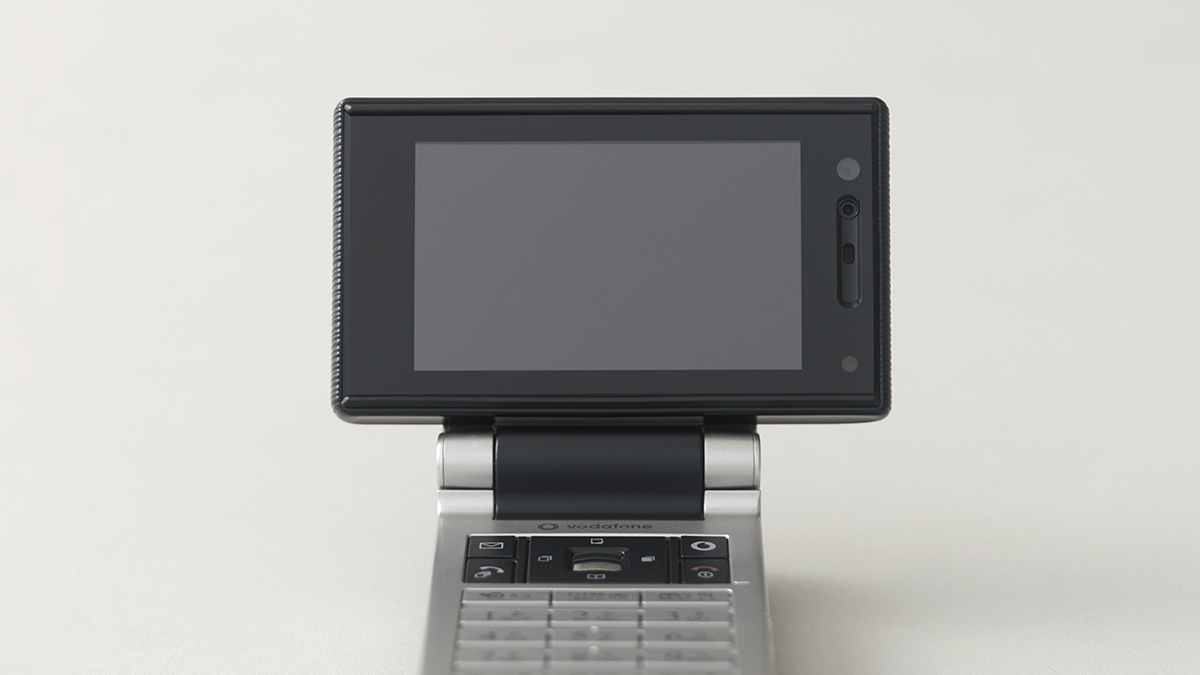
How Do People Watch TV on a Mobile Phone
The feature of this product is its display rotating 90 degrees.
I would like to introduce the episode behind its development based on a story I heard from its developer at that time.
A project team was formed inside the company gathering various members from different fields to discuss “How do people watch TV on a mobile phone?” and “What is the optimum viewing situation of the mobile phone in everyday life?” Many models were created based on logic on how to use mobile phones, and finally this T-shaped viewing style rotating the display 90degrees was adopted.
By making it a T-shaped style, it can meet the demands of users like:
– Watch the TV with a wide view
– Hold the device firmly by one hand even on a train
– Use calling and email functions in an accustomed style
– Place the device nearby to watch TV while working or doing house chores
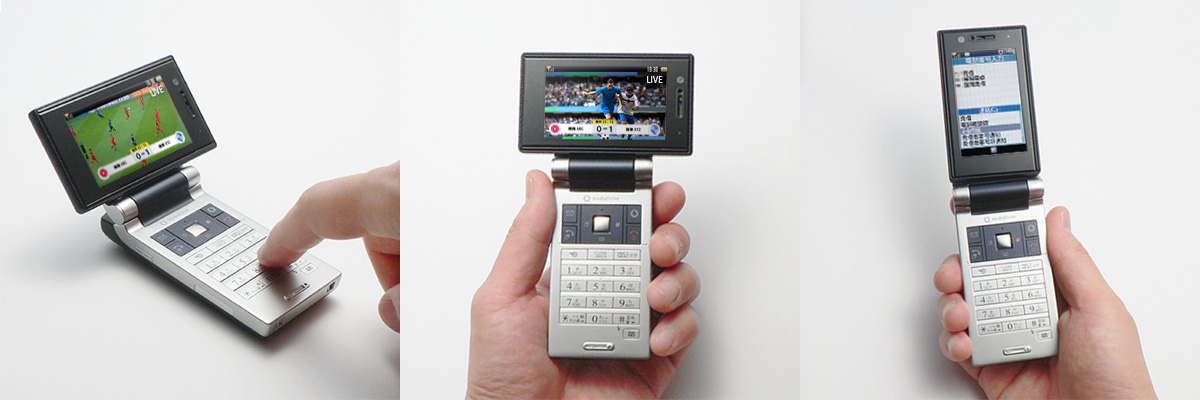
90 Degree Rotating Display
However there were obstacles to realize this demand.
In order to realize this T-shaped style, the display needs to be turned sideways. However if the display part is rotated centering the axis, the body part needs to be made larger. The development members work hard to come up with an idea of the rotating mechanism, and worked together as a team to solve this issue.
As a result, the solution to form a cycloid structure moving the rotation axis was found.
Listening to the stories from that time, I could feel the professionals from different backgrounds such as mechanics, circuits, LCD, one-segment tuners, and design etc. trusted each other and had the strong will to never give up, which enabled the success in creating the cycloid style.
So how does the rotating axis of the cycloid structure actually move?
If you want to see for yourself, please come visit us at Sharp Museum. We display a special transparent model to actually see how it works!
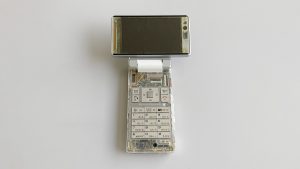
That’s it for this time. Next we will introduce our front-loading style record player.
[Sharp Museum commemorated it 40th anniversary on November 2021]
This is a series of Sharp Museum staffs Fujiwara and Nakatani talking randomly about products and history of Sharp. I hope this will be an opportunity for you to find interest in Sharp’s history in some way.